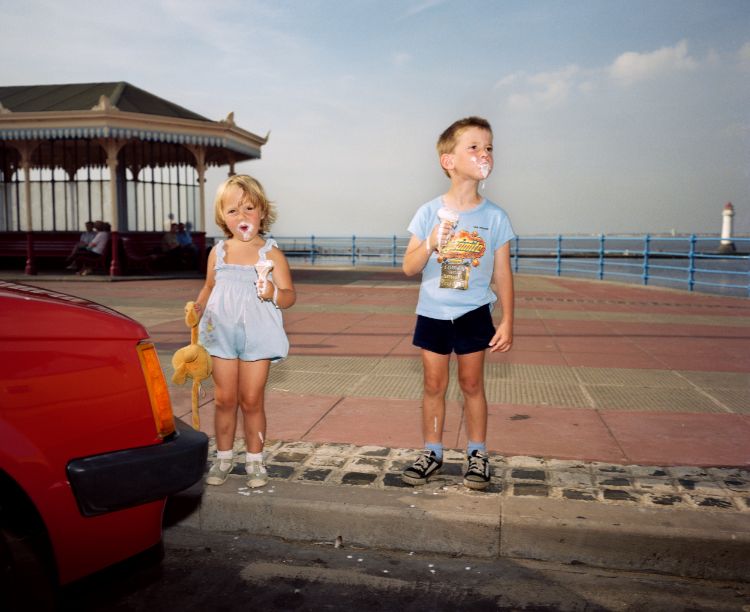The Last Resort is a series of photographs taken by Martin Parr between 1983 and 1985 in New Brighton, a coastal suburb of Liverpool. After buying a house half a mile away from the seaside town, Parr discovered New Brighton and was immediately ‘attracted to its litter and energy’, and decided to embark on a project documenting the area. The series is understood to perfectly encapsulate the 80s working-class reality, portraying the essence of the British holiday in its chip-shop wrappers, excessive smoking, and rundown resorts. The honesty and familiarity with which Parr shot his series quickly propelled him to success and granted him national fame.
Parr shot The Last Resort in colour, departing from the traditional black and white medium traditionally associated with fine art photography. Combined with the use of daylight flash, the series became, in Parr’s own words’ ‘hyper real’, illuminating Britain in a state of simultaneous decay and amusement. Parr’s expressive use of colour was inspired by the commercial language used by the American photographers Stephen Shore and William Eggleston, who both used their medium to legitimise colour photography.
When first exhibited in the Serpentine Gallery in 1986, The Last Resort caused public outcry and garnered widespread controversial attention. Critics understood the series as a political statement condemning the economic policies led by Margaret Thatcher, the Prime Minister at the time. Art critic David Lee, amongst many others, interpreted The Last Resort as cruel and voyeuristic, claiming that the working-class were portrayed as “fat, simple, styleless, tediously conformist and unable to assert any individual identity”. However, Parr maintains that his interest was not focussed on class discrepancies, but rather on the everyday truisms that we all experience, be it a screaming child or bad weather. The photographer captured working-class reality with a ‘warts-and-all’ attitude, displaying characters with a truthful, unreserved manner. It was, indeed, the working-class experiences which shocked the London art scene, who were accustomed to the divisive separation that 80s Conservatism bred.
Ultimately, The Last Resort explored the contradictions of British life and the very notion of the holiday. Rather than golden sands, New Brighton is defined by concrete; in place of souvenirs, the town is dominated by large pieces of haulage machinery. Set against Thatcherism and the elitist art world, the series was contentious and trailblazing in equal measure
(By Eleanor Lerman)
